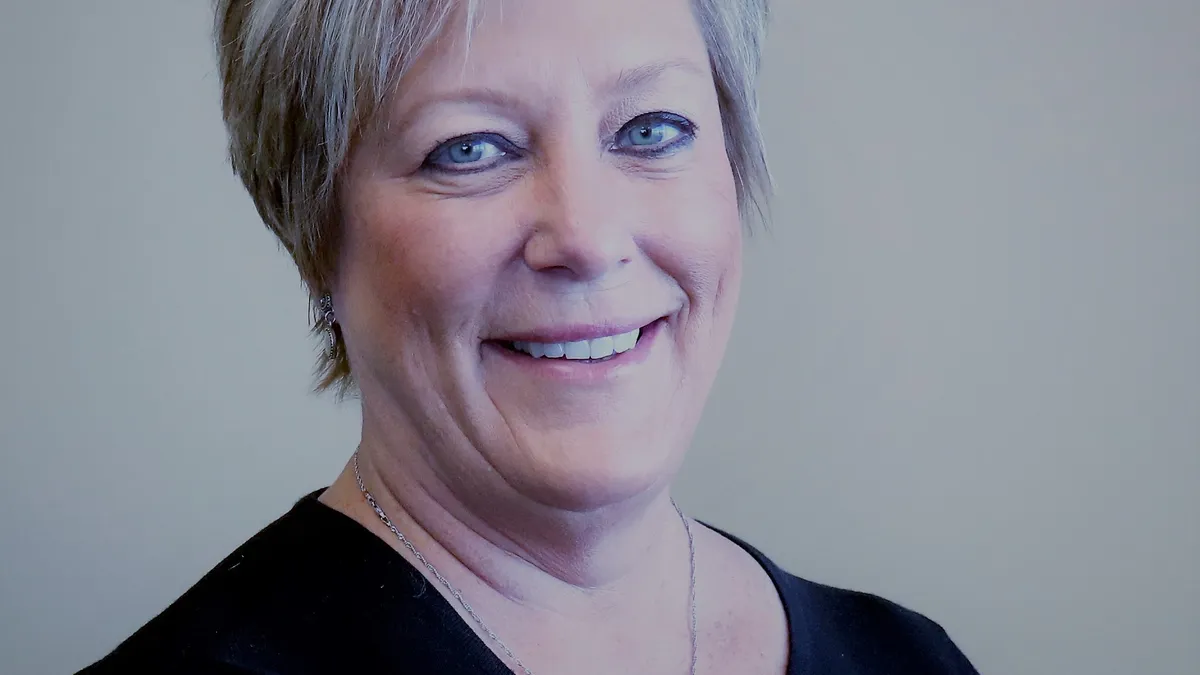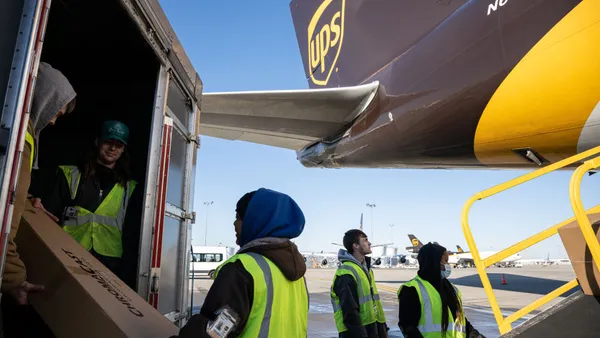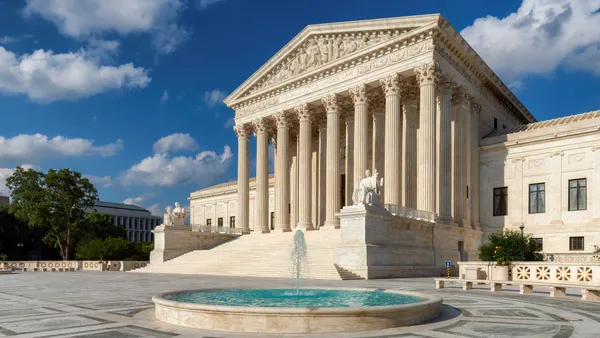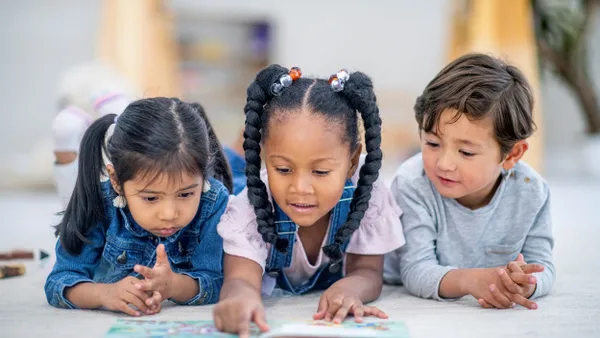For several years, Independent School District 728 in Elk River, Minnesota, has ranked at or near the top on state assessments. Much of that success, according to Superintendent Daniel Bittman, is thanks to Assistant Superintendent of Educational Services Jana Hennen-Burr.
But there's more to what's working in the state's eighth-largest district than assessment success. We recently caught up with Hennen-Burr, who comes from a special education background and has also served as an elementary and high school principal, to learn more about how the community informs the district's strategic plan, the district's progress on social-emotional learning and career education, and the importance of work-life balance.
Editor's Note: This interview has been edited for brevity and clarity.
EDUCATION DIVE: What kind of thought processes go into the strategic planning part of your job?
JANA HENNEN-BURR: We work with a consultant, and they give us guidance and assist us over the course of time. But basically it really is community driven.
We start with community cafes in different parts of our system ... and we're sure to elicit feedback from all parties. Really it's as simple as, "What is it that you want for your children as they move through our system?”
We gather all of that feedback, and we bring it back here to the district level. We take that information and decipher it and kind of drill it down to what are the bedrocks. From there, we gather what we call a core team, and we meet annually every year. This core has met, or set up with, every part of our organization, and it could [include] parents, students, clergy, police and so on. They gather to say, “OK, here's what the community has said. Let's talk about each one of those areas and where we want to go with that within a five-year span.”
Typically, most strategic plans we use are developed for [periods of] five or seven years. But when you get to that seventh year, holy cats, everything has changed. So we really believe in looking at it year-to-year, and then from a three- to five-year point of view. We are always working on it each and every year.
We have 17 buildings and 17 principles, so we start with an ed services strategic action plan. We take those big goals and say, “OK, where do we want to be in five years?” And then we backwards map it. I pass that along to our building principals, and they take those goals and create strategies within their buildings, because they know their buildings best.
Some are further along the journey in some areas, some are maybe spot on, and some need to do some catching up. It just depends on their student population.
We are very strategic, and we bring it to life in our principal meetings and in my director meetings. There's a culminating activity at the very end of the year with that core planning group. We bring our evidence to speak on our progress and our failures, basically, and say what works, what didn't work and what would we amend based on the information and data we have. It sounds easy, but it's just a lot of hard, dedicated work all in the same direction.
One thing that jumped out when I looked at the district's strategic plan was that the core values and learner outcome goals, in the way they're worded, really place social-emotional learning and growth mindset and lifelong learning up front as priorities.
HENNEN-BURR: Exactly. And that really is community driven. That is exactly what they wanted for their kids.
Even probably 10 years ago, we were very strategic and getting community buy-in and internal buy-in about what it is we wanted for our kids. Then we established our core values. We're in our second iteration of this process, and those have remained constant.
What changes is our learner outcomes and our strategies about how we're going to get there. All kinds of fingerprints go onto this document. This, of course, then becomes layers of different plans and action plans. It's not about checking things off the list. It's about how do we know that we've truly met a learner outcome?
And how do we know that we've done this with integrity, and that our kids really know? Our community core planning team holds us accountable to that, so they're always kind of checking in and questioning. That's their role in this process.
When it comes to having the focus on things like SEL, growth mindset and lifelong learning, are there any challenges with balancing those as priorities alongside accountability pressures from the state and federal level?
HENNEN-BURR: You know, not really. I think it's that idea of knowing when to push and when to nudge and when to say, “Let's go deeper and let's do it right and well,” instead of, again, checking it off.
We have had great support in (SEL). We're at the beginning stages. Our state has just identified guidelines last spring. We're taking those guidelines, informing our 800-plus staff about what is social-emotional learning and what are the big competency areas.
This year, in a very strategic way, we're focusing on relationships. And it’s not only adult-to-student relationships; it's how do we teach students to develop healthy relationships? We have some evidence around that, some common ways to assess that. Ultimately, it's about kids and how they develop relationships.
Listening to people from all sorts of districts all over the country, is it seems like there's a lot of places where people are still trying to figure out how best to embed SEL in curriculum.
HENNEN-BURR: Here's what we believe, and we're not there yet. I don't claim to be an expert, but what we're finding is that, once we inform people about the big areas — it could be emotional regulation, relationships, self-awareness — we've been bombarded with curricular vendors that seem to say to us, "We've got it figured out, let us do it.”
We're taking a little different approach. We want to take those guidelines and dissect them, because we believe it's everybody's role in our system, whether you're a cook, custodian, teacher and so on, to develop relationships. We’re working internally and seeing where we have holes and then determining where we could take a curriculum vendor’s kind of slice and plug it into areas we don't have figured out yet. That's our approach today, but that may change as we progress through the other areas.
Another area I've heard you're really strong in is career and technical education. What's your approach to arranging community partnerships around programs for that?
HENNEN-BURR: We're still in that suburban area where it's not so urban and it doesn't seem like it's hard to connect with our business partnerships. What we've learned over time is that we have to go to our business partners, and they're hungry to tell us, “Here are the skills our kids need. Here's what we're seeing in the area of manufacturing.”
We're in the design mode in a couple of career pathways — manufacturing, health and human services, culinary. We have a welding pathway. What we're doing is working to be able to prepare kids and give them credit. And when they go out into the work world, whether it's to job shadow or to intern, that they're able to get credit for that, as well.
Our dream is to start E-12 and build on that pathway. But right now, where I say we're really solid is in our grades 9-12 program. We have room to grow yet.
Our community is very receptive. We've come through a time in our system where we really focused on four-year degree college. Then there came a time within the last five to seven years where we needed more plumbers, welders, automotive (technicians) — those sort of folks.
Not only our parents, but also our businesses, said, “Broaden your plans for all kids.” That's really a sentiment in our whole strategic plan, that public school in our community has to be for every child. And not every child is going to go on to a four-year degree. So let's create these pathways.
How crucial is modeling work-life balance to district success, from the central office all the way to the classroom? How can other administrators model that?
HENNEN-BURR: What I have learned is that if you're not taking care of yourself as a person — getting enough rest, exercise, eating well — then you're just shortchanging yourself. And then when you come to work, that all impacts us as productive workers.
I'm always trying to model or to encourage and learn with other people. How can we get these big jobs and our work done and yet still be able to go home and enjoy our families and feel like it's OK if we don't get everything done to perfection? Sometimes we have to prioritize, and where are we going to spend our time and energy.
I think educators by and large are people who work tirelessly and probably in a perfectionistic manner. So it's giving them permission. It does go with appreciation and recognition, but also with taking care of yourself. It's a work in progress of knowing when you can work with your people to know that they need a break or when it's time to shift some workload. It's not because they don't have the capacity. It’s just that their plate is too full.
I think that's part of my role, to monitor and adjust on behalf of the system.












